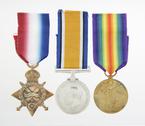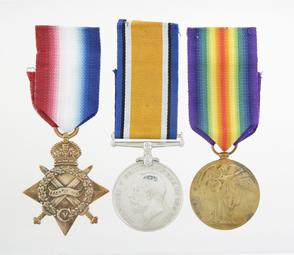
Unit
22nd Canadian Infantry Battalion (French Canadian)
Branch
Infantry
Service Component
Canadian Expeditionary Force
Service Number
61548
birth
1886/01/31
Saint-Jérôme, Quebec, Canada
death
grave
Gender
Male
Janvier Brisebois was born 31 January 1885 in Saint-Jérôme, Quebec. At the time of his attestation Janvier was working as a painter in Ste Jérome.
He joined the Canadian Expeditionary Force (CEF) 26 October 1914 and was immediately assigned to the 22nd Canadian Infantry Battalion (French Canadian). He sailed with the initial deployment of this unit leaving aboard SS Saxonia in October 1915. After follow-up training in the United Kingdom the unit left Folkstone for France, arriving in Boulogne 19 September 1915. The 22nd Battalion was incorporated into the 5th Canadian Infantry Brigade of the 2nd Canadian Division. By May of 1916 it was deployed in the Ypres Salient with the unit alternating between trenches in the Saint Eloi, Belgium, where the 2nd British Army had been engaged in the Battle of the Saint Eloi Craters. The Canadian Corps relieved the British towards the end of the action assuming positions that were in a poor state. The action was largely over by 19 April and by the end of the month the 22nd were moved to the St Eloi trenches from Dickebusch. In the process of the move some casualties were suffered and it is probable that at this time Pte Brisebois suffered a gunshot wound. He was one of some 1400 casualties suffered by the 2nd Division at this time. The wound did not appear to be serious and he returned to duty a few weeks later. He was therefore available for the action at Mount Sorrel in June 1916 in the same Ypres Salient. This consisted of a German assault and a British counter-offensive which involved their 4th and 2nd army, including the 22nd. Taking place between 2 and 13 June 1916, the battle was a see-saw affair that largely resulted in a return to positions originally held. The Canadian Corps suffered over 8000 casualties – one of whom was Pte Brisebois who suffered a gunshot wound to his arm. When infection set in he was sent back to the United Kingdom to recover. He received some initial trench mortar training after his recovery and was sent back to France in February 1917 where he got more instruction. However in April of that year he was diagnosed with myalgia in the back and limbs and sent back to the United Kingdom. Here he spent the rest of the war either in the Canadian Convalescent Depot, the 10th Reserve Battalion and the 2nd Quebec Reserve Depot. On 7 December 1918 he sailed for Canada and was demobilized 25 January 1919 in Montreal.
He initially gave his retirement address as Saint Jérome but soon changed that to De St. Valiere St. in Montreal. There is little record of his subsequent life but he married Angelina Brisebois in Montreal 9 June 1920. According to the 1957 Voters’ List he was still working as a painter and living with Angelina in St. Denis Quebec. There appears to be no public record of his death or burial.


